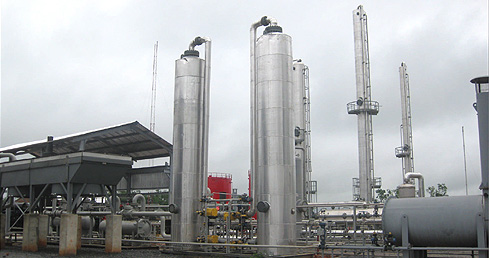Molecular Sieve Dehydration
Molecular Sieve Dehydration Units work on the principle of adsorption. Molecular Sieve Dehydration units typically have higher initial capital investments than comparable glycol units but also are able to achieve very low dew points which are required for cryogenic plants. Additionally, Molecular Sieve Units can also handle large flow variations as well as higher inlet gas temperatures. |
Typically Molecular Sieve Units consist of the following equipment:
Based on the client’s preferences and the overall process schematic, there are several variations on the process flow. However, the basic principle of operations starts with the wet gas entering the adsorption tower at the top which contains the molecular sieve dessicant. The gas exist the bottom of the vessel dry. While one tower is adsorbing, the other tower is regenerating. For regeneration, gas is heated up to 550 ˚F and is sent to the tower in regeneration to extract the water from the molecular sieves. As the saturated gas leaves the top of the vessel, it is cooled in a condenser and then the condensed water is separated in separator. The two towers switch between adsorbing and regenerating usually on a fixed cycle. Depending on the process conditions and overall schematic, SPEC can offer specific solutions for your Molecular Sieve requirements.
|


